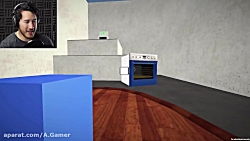
The motion platform gave the pilot cues as to real angular motion in pitch (nose up and down), roll (wing up or down) and yaw (nose left and right). When the cockpit was covered, pilots could practice flying by instruments in a safe environment. A generic replica cockpit with working instruments was mounted on the motion platform. A vacuum motor similar to those used in player pianos rotated the platform, providing yaw cues. His design had a pneumatic motion platform driven by inflatable bellows which provided pitch and roll cues. He was also a pilot, but dissatisfied with the amount of real flight training that was available, he decided to build a ground-based device to provide such training without the restrictions of weather and the availability of aircraft and flight instructors. The Link family firm in Binghamton manufactured player pianos and organs, and Ed Link was therefore familiar with such components as leather bellows and reed switches. Some of these early war era flight simulators still exist, but it is becoming increasingly difficult to find working examples.

The Link Trainer was a basic metal frame flight simulator usually painted in its well-known blue color. He later patented his design, which was first available for sale in 1929. The best-known early flight simulation device was the Link Trainer, produced by Edwin Link in Binghamton, New York, USA, which he started building in 1927. During World War I, some ground-based simulators were developed to teach this skill to new pilots. This is sometimes also called "deflection shooting" and requires skill and practice. Firing at a moving target requires aiming ahead of the target (which involves the so-called lead angle) to allow for the time the bullets require to reach the vicinity of the target.

The "Tonneau Antoinette" (Antoinette barrel), created by the Antoinette company, seems to be the precursor of flight simulators.Īn area of training was for air gunnery handled by the pilot or a specialist air gunner. In 1910, on the initiative of the French commanders Clolus and Laffont and Lieutenant Clavenad, the first ground training aircraft for military aircraft were built.

2 Types of flight training devices in service.


 0 kommentar(er)
0 kommentar(er)
